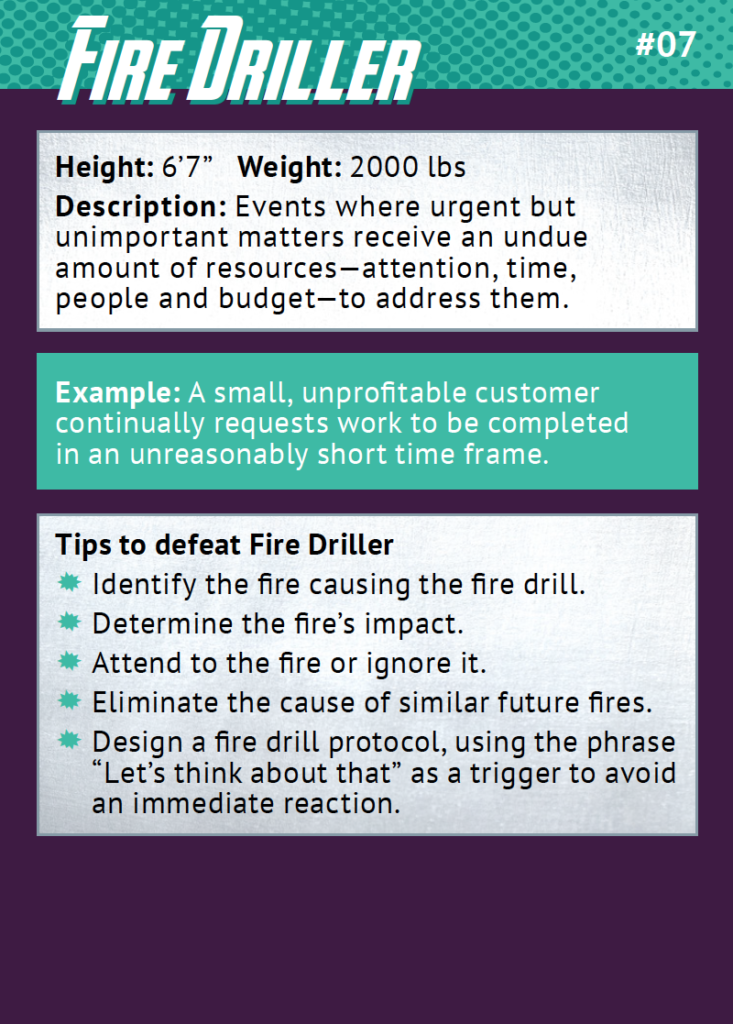How many times per week are you and your team taken off course by a fire drill? No, not the kind you remember from school where a bell rings and students are marched outside for 20 minutes until the “all clear,” is given. I’m referring to the office fire drill where someone creates a commotion about an urgent, but unimportant issue, and people are expected to drop what they’re working on and respond with Indy pit-crew speed to the made-up emergency.
Fire drills are a product of their environment. People, culture and a lack of discipline all play a role in continuing to fan the flames of fire drills. The adrenaline-filled reaction to urgent but, otherwise unimportant events, can be intoxicating and fill managers with a sense of instant gratification for the flurry of activity required to put them out. Examples of internal fires include:
· Senior leaders demanding manual lists or reports that require time, labor, and energy to put together, versus those that can be automatically generated.
· Flavor-of-the-month initiatives that aren’t directly related to people’s strategic plans.
· Attendance on conference calls that have no direct business value for the participant.
Examples of external fires include:
· The same customer continually asking for activities to be performed in a much shorter time frame than normal.
· Requests for proposal (RFP) that don’t match up with your business acquisition criteria.
· People outside the organization seeking teleconferences or meetings to discuss partnerships or alliances without first providing sufficient business rationale.
Just as fire requires oxygen to burn, fire drills require attention to fan their flames. Fire drills can become a habit and consume a disproportionate amount of resources. Is there someone in your group that has become the “Fire Driller”? In my new business graphic novel, StrategyMan Vs. The Anti-Strategy Squad: Using Strategic Thinking to Defeat Bad Strategy and Save Your Plan, the villain that represents this issue is Fire Driller. To see the full range of cards and explore more than 100 resources on strategic thinking and planning, visit www.StrategySkills.com and join the League of Strategists today.


